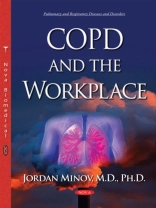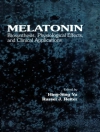Chronic obstructive pulmonary disease (COPD) is a major cause of disability and is the fourth leading cause of death throughout the world. Although cigarette smoking is the major and best studied causative factor of COPD, there is consistent evidence that a substantial proportion of COPD cases cannot be explained by smoking. Other noxious particles and gases, such as workplace dusts, vapours, fumes or gases, indoor air pollution from burning biomass fuels during cooking foods and heating spaces, and air pollution in urban areas are important risk factors of COPD. According to collected data, 15-20% of COPD cases are likely to be caused or made worse by work; around 4, 000 COPD deaths every year are related to workplace exposures, and 40% of COPD patients are below the retirement age. The development of COPD as a consequence of workplace exposure is a matter of growing interest and importance. There is no doubt that certain workplace exposures enhance the risk of COPD and may do so independently of or in concordance with cigarette smoking. The evidence is most coherent for work that entails exposure to coal, silica, welding fumes, cadmium fumes, cotton dust, farming dusts, grain dust and/or wood dust. The research found consistent associations between workplace exposures and COPD across a wide range of sectors, describing a nearly uniform pattern of exposure-response relationships. Based on the research, affected occupations include miners, construction workers, road workers, tunnel workers, welders, glass workers, metal workers, foundry workers, textile workers, farm laborers, wood workers, chemical workers, and rubber workers; in other words, a working population including millions and millions workers worldwide have been affected. It seems that occupational risk for COPD, although variable, is smaller compared with that of cigarette smoking. However, it affects a large proportion of the population and its contribution to the total burden of COPD cannot not be neglected. In addition, existing evidence indicates that workplace exposure may influence the course of COPD as factors with significant impacts on the progression and severity of the disease. As in the case of the workplace agents being causative factors of COPD, the mechanisms underlying this effect still are not fully understood. This monograph contains seven chapters which cover the most important aspects of this issue. It summarizes results of the studies performed in this area of research and conclusions based on them. This monograph also presents the author’s view regarding the influence of workplace exposures on the development and progression of COPD. In addition, it may be a basis for further research for better understanding of the association between COPD and workplace exposures.
Jordan Minov
COPD and the Workplace [PDF ebook]
COPD and the Workplace [PDF ebook]
Koop dit e-boek en ontvang er nog 1 GRATIS!
Formaat PDF ● Pagina’s 99 ● ISBN 9781634845182 ● Editor Jordan Minov ● Uitgeverij Nova Science Publishers ● Gepubliceerd 2016 ● Downloadbare 3 keer ● Valuta EUR ● ID 7226496 ● Kopieerbeveiliging Adobe DRM
Vereist een DRM-compatibele e-boeklezer












